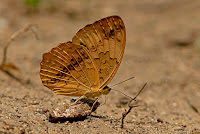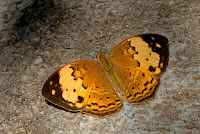<> Cupha erymanthis (Drury, 1773) <>
the Rustic ผีเสื้อลายขี้เมี่ยง
Click on any photo to see all photos full size in Lightbox
Additions and corrections to the information provided on this page is always welcome. Please use the Contact form.
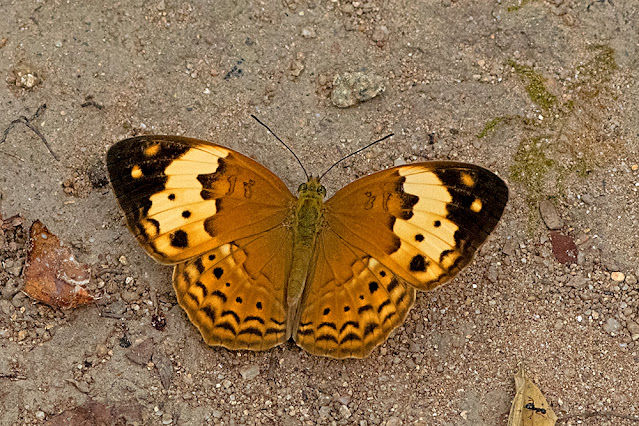
Photo taken at Lamnamkok National Park, Chiang Rai, Thailand. 450m a.s.l.

Cupha erymanthis is common and widespread throughout the whole region. Although their colouration is quite variable the sexes are identical in appearance and have a powerful flight. They are difficult to approach and very easily disturbed. They rarely stop flying for more than a few seconds making them difficult to study and also somewhat tricky for wildlife photographers.
The species is multivoltine with a short lifecycle and there are therefore several broods per annum. Adult females lay their eggs on young saplings and the resulting larvae eat the eggshell as their first meal.
Synonyms: Cupha placida, Cupha dohertyi , Papilio erymanthis, Papilio lotis, Messaras erymanthis, Cupha decolorata, Cupha nomurai, Cupha sadaichii
Taxonomy: Animalia - Arthropoda - Insecta - Lepidoptera - Nymphalidae - Heliconiinae - Cupha - erymanthis
Regional subspecies: Cupha erymanthis erymanthis (Myanmar, Thailand, Laos, Cambodia, Vietnam, S.China, Taiwan), Cupha erymanthis lotis (Malaysia, Singapore, Indonesia). There are more subspecies listed on various islands in Indonesia. More taxonomic study is needed on this species as there doesn't seem to be a consensus on the number of subspecies or their locations.
Regional Distribution: India, Nepal, Bhutan, Bangladesh, Myanmar, Thailand, Laos, Cambodia, Vietnam, China, Taiwan, Malaysia, Singapore, Indonesia, Philippines
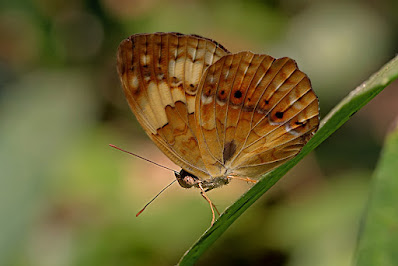 |
| Kalaw, Shan State, Myanmar c.1200m a.s.l. |
Habitat: Cupha erymanthis is found in open evergreen and deciduous forest areas, woodland edges, and urban parks & gardens. It is often seen near rivers and streams and at elevations up to 2500m a.s.l. in the Himalayas.
Flight time: all year depending on location Wingspan: 45-55mm
Life History: egg 3 days instar 1 2 days instar 2 1-2 days instar 3 1-2 days instar 4 3 days instar 5 3-4 days pupa 5 days Total egg to adult 18-20 days. All times are approximate.
Larval Hosts: Flacourtia indica, Flacourtia inermis, Flacourtia jangomas, Flacourtia ramontchi, Flacourtia rukam, Homalium ceylanicum, Homalium cochinchinense, Homalium tomentosum, Itea oldhamii, Salix babylonica, Salix kusanoi, Salix tetrasperma, Scolopia acuminata, Scolopia chinensis, Scolopia crenata, Scolopia oldhamii, Scolopia saeva, Xylosma congesta (Salicaceae), Glochidion eriocarpum (Phyllanthaceae), Celtis tetrandra (Cannabaceae), Lepisanthes fruticosa, Lepisanthes rubiginosa (Sapindaceae), Lantana camara (Verbenaceae). Actual host plant used depends upon location and availabilty of plant species.
Adult Food Sources: Nectar - Premna serratifolia (Lamiaceae), Leea indica (Vitaceae), Zanthoxylum avicennae (Rutaceae), Cinnamomum sulphuratum, Litsea glutinosa (Lauraceae), Myristica malabarica (Myristicaceae), Chromolaena odorata, Sphagneticola trilobata (Asteraceae), Pseuderanthemum maculatum (Acanthaceae). Other: mud puddling, carrion, rotting fruit.
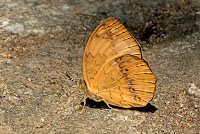 |
| Doi Suthep-Pui National Park, Chiang Mai, Thailand |
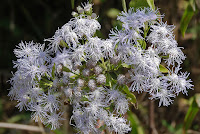 |
| Chromolaena odorata, a nectar source |
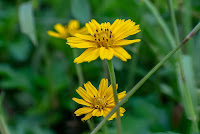 |
| Sphagneticola trilobata, another nectar source |
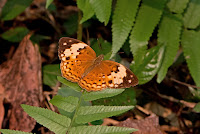 |
| Lamnamkok National Park, Chiang Rai, Thailand |
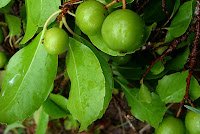 |
| Flacourtia indica, a common larval host |
 |
| Celtis tetrandra, another larval host |
Links to other pages in this series for species in the same subfamily

